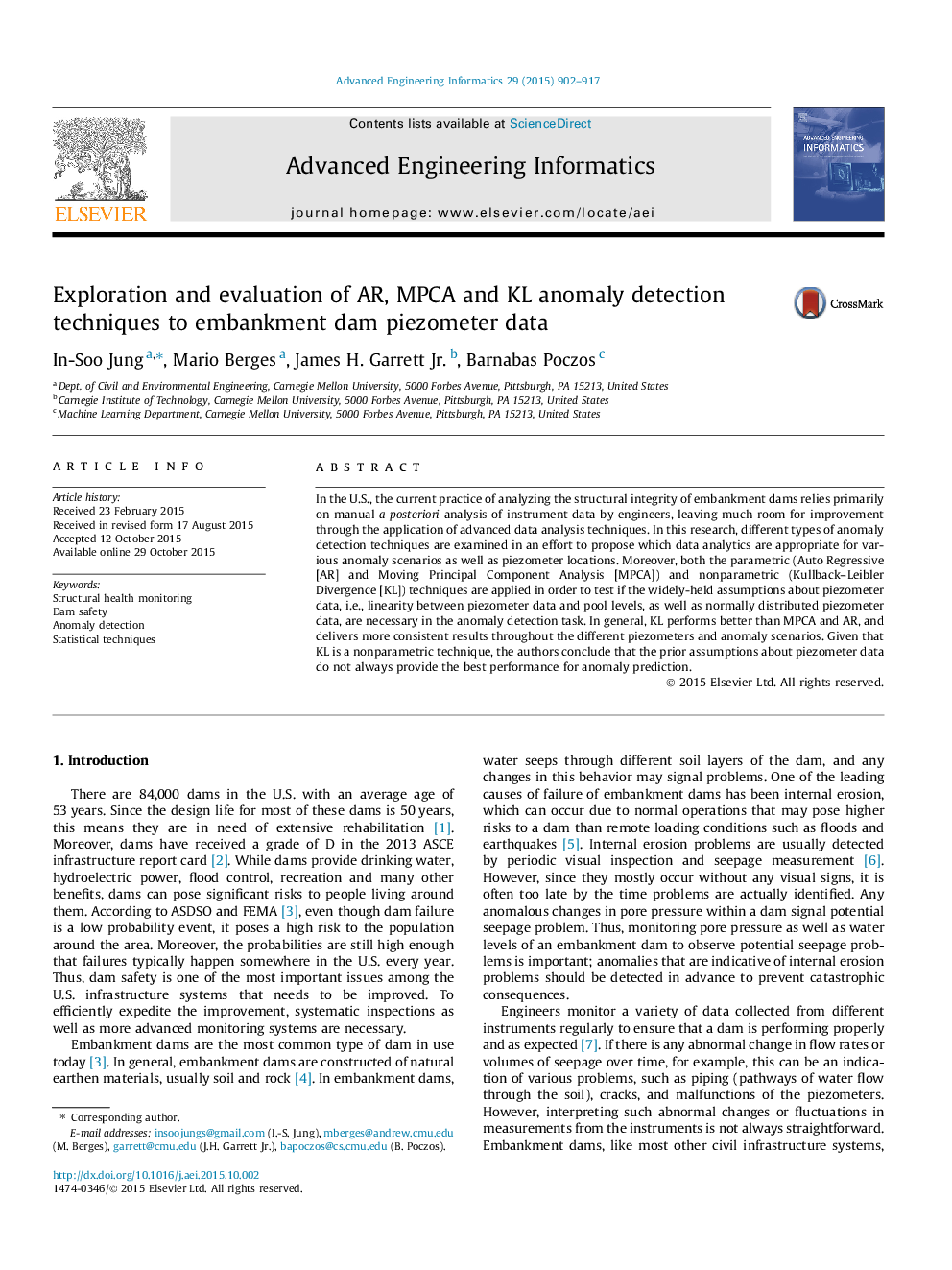| Article ID | Journal | Published Year | Pages | File Type |
|---|---|---|---|---|
| 241961 | Advanced Engineering Informatics | 2015 | 16 Pages |
In the U.S., the current practice of analyzing the structural integrity of embankment dams relies primarily on manual a posteriori analysis of instrument data by engineers, leaving much room for improvement through the application of advanced data analysis techniques. In this research, different types of anomaly detection techniques are examined in an effort to propose which data analytics are appropriate for various anomaly scenarios as well as piezometer locations. Moreover, both the parametric (Auto Regressive [AR] and Moving Principal Component Analysis [MPCA]) and nonparametric (Kullback–Leibler Divergence [KL]) techniques are applied in order to test if the widely-held assumptions about piezometer data, i.e., linearity between piezometer data and pool levels, as well as normally distributed piezometer data, are necessary in the anomaly detection task. In general, KL performs better than MPCA and AR, and delivers more consistent results throughout the different piezometers and anomaly scenarios. Given that KL is a nonparametric technique, the authors conclude that the prior assumptions about piezometer data do not always provide the best performance for anomaly prediction.
